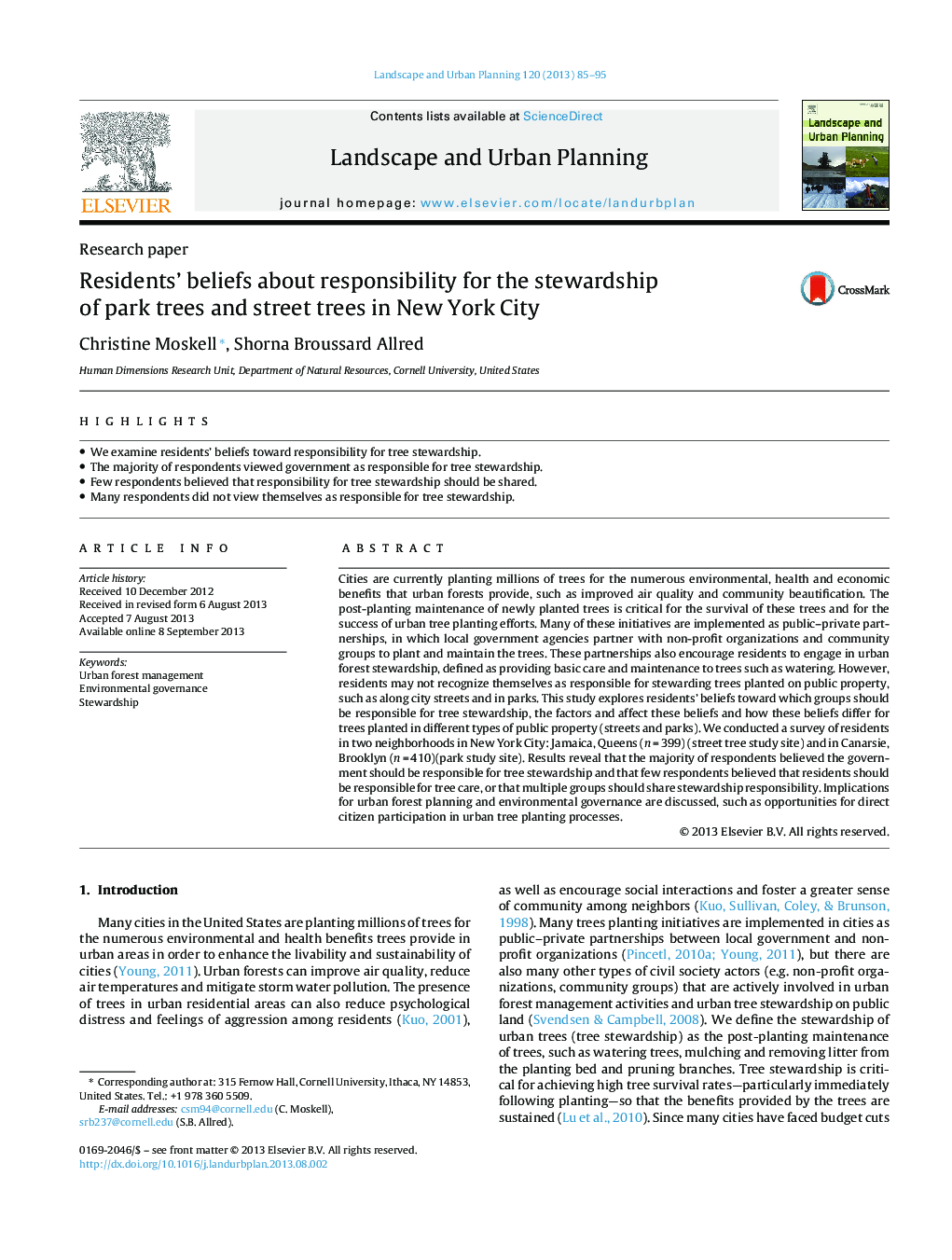| Article ID | Journal | Published Year | Pages | File Type |
|---|---|---|---|---|
| 7461774 | Landscape and Urban Planning | 2013 | 11 Pages |
Abstract
Cities are currently planting millions of trees for the numerous environmental, health and economic benefits that urban forests provide, such as improved air quality and community beautification. The post-planting maintenance of newly planted trees is critical for the survival of these trees and for the success of urban tree planting efforts. Many of these initiatives are implemented as public-private partnerships, in which local government agencies partner with non-profit organizations and community groups to plant and maintain the trees. These partnerships also encourage residents to engage in urban forest stewardship, defined as providing basic care and maintenance to trees such as watering. However, residents may not recognize themselves as responsible for stewarding trees planted on public property, such as along city streets and in parks. This study explores residents' beliefs toward which groups should be responsible for tree stewardship, the factors and affect these beliefs and how these beliefs differ for trees planted in different types of public property (streets and parks). We conducted a survey of residents in two neighborhoods in New York City: Jamaica, Queens (n = 399) (street tree study site) and in Canarsie, Brooklyn (n = 410)(park study site). Results reveal that the majority of respondents believed the government should be responsible for tree stewardship and that few respondents believed that residents should be responsible for tree care, or that multiple groups should share stewardship responsibility. Implications for urban forest planning and environmental governance are discussed, such as opportunities for direct citizen participation in urban tree planting processes.
Related Topics
Life Sciences
Agricultural and Biological Sciences
Ecology, Evolution, Behavior and Systematics
Authors
Christine Moskell, Shorna Broussard Allred,
